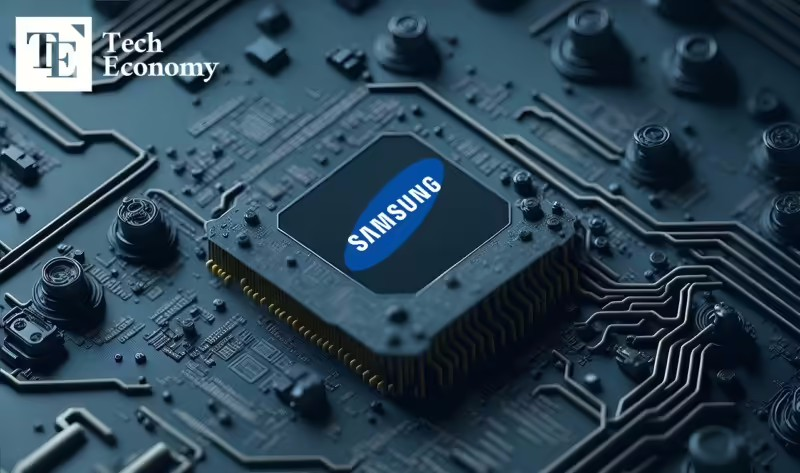Samsung Electronics Foundry Shifts Focus to Mature Process Nodes — When Will It Catch Up in the 2nm Race?
Input
Changed
Semiconductors for Nintendo’s ‘Switch 2’ to Be Manufactured Using Samsung’s 8nm Process IBM, Hyundai Motor Also Turn to Samsung’s Mature Process Nodes Lagging Behind: Samsung Still Struggles in the 2nm Advanced Node Race

As the semiconductor industry barrels toward ever-smaller and more powerful process nodes, Samsung Electronics has taken a strategic step back—at least temporarily. The tech giant is intensifying its focus on mature manufacturing processes like 5nm and 8nm, a move driven largely by a wave of global clients prioritizing cost-efficiency over cutting-edge innovation. But as demand for legacy nodes surges, a critical question looms: can Samsung use this momentum to catch up in the high-stakes race for 2nm supremacy?
Nintendo Chooses Samsung’s 8nm Process
One of the most high-profile validations of Samsung’s mature node strategy comes from Nintendo. According to industry sources on May 14, Samsung Foundry has been tapped to produce NVIDIA’s Tegra system-on-chip (SoC) for the upcoming Switch 2 console. Though initially weighing options between Samsung’s 5nm and 8nm nodes, Nintendo ultimately chose the latter, citing lower costs and better yield. Notably, the 8nm process doesn’t require the costly extreme ultraviolet (EUV) lithography used in more advanced nodes, making it an economically sound decision.
Nintendo expects the Switch 2 to exceed 15 million units in initial sales. A gaming industry insider suggests this figure is conservative, pointing out that strong consumer anticipation could drive sales past 20 million units within a year or two. For Samsung Foundry—currently grappling with low utilization rates—the Nintendo deal is more than just a boost in production. It could become a critical foothold in the gaming console market. As one analyst puts it, the deal not only brings immediate benefits but also positions Samsung as a viable alternative for future orders from gaming heavyweights like AMD.
Global Clients Flock to Samsung — Is Cost the Deciding Factor?
Samsung’s mature node foundry services are attracting a growing roster of global clients beyond the gaming world. IBM, for instance, has awarded Samsung the contract to produce chips for its Telum 2 processor and SPEAR AI accelerator—unveiled during the 2024 Hot Chips conference. These chips, built on Samsung’s 5nm process, will power IBM’s next-generation Z-series mainframes. Looking ahead, Hyundai Motor is also set to work with Samsung beginning in 2030 to produce ADAS (Advanced Driver Assistance System) chips for its premium Genesis vehicles, likewise using 5nm technology.
The unifying factor among these diverse clients is cost. Despite TSMC’s undisputed lead in cutting-edge processes, its mass production pricing remains considerably higher than Samsung’s. According to a semiconductor expert, companies that don’t need the absolute latest nodes often find Samsung to be a more cost-effective partner—especially for 5nm and 8nm solutions.

The Competitive Landscape of the 2nm Foundry Market
However, success in mature nodes does not equate to dominance in next-generation technologies. Samsung is still struggling to gain a competitive foothold in the 2nm space, which is rapidly becoming the epicenter of the global foundry race. Current estimates place Samsung’s 2nm yield at just 30–40%, well below the 60% threshold generally accepted as viable for mass production.
Meanwhile, industry leader TSMC has already crossed that critical threshold, boasting over 60% yield on its 2nm process. The company is not only technologically ahead but also commercially secure, having lined up top-tier clients such as Apple, AMD, and Qualcomm. Mass production is set to commence later this year at Fab 20 (P1) in Baoshan, Hsinchu, with expansion planned across four additional plants in Hsinchu and three in Nanzih, Kaohsiung.
Industry experts stress that Samsung must capitalize on its current wave of mature node revenue to fortify its position in advanced nodes. One market analyst cautioned that Chinese foundries, which offer even more aggressive pricing, are catching up fast in the mature segment. If Samsung doesn’t pivot strategically, it risks losing ground not only in the 2nm space but also in the very markets it’s now dominating. Building foundational strength through mature node revenues may be the only way to scale up and mount a credible challenge to TSMC in the advanced node frontier.





















